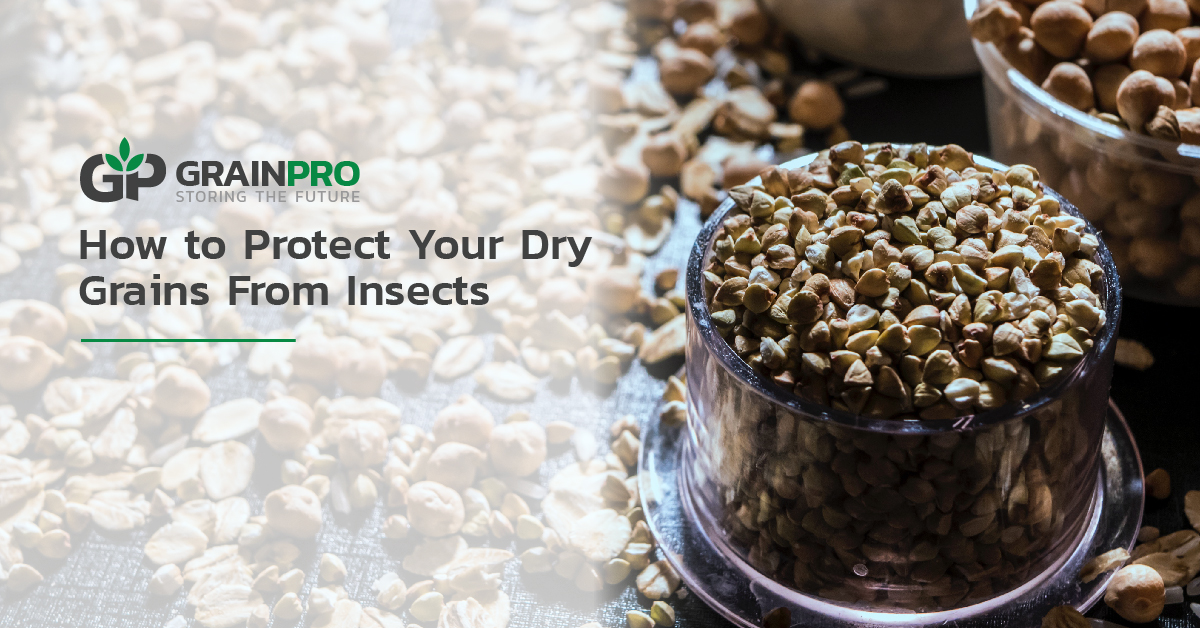How to Protect Your Dry Grains From Insects

Grains like wheat, rice, oats, and corn are a dietary staple in many countries all over the world. Farmers, traders, and manufacturers exert great effort to produce grains to supply global demand.
With food scarcity on the rise due to global warming as well as the COVID-19 pandemic, food producers and handlers must secure their grains even more so now.
Insect damage causes a great deal of loss for many farmers and traders. Insect infestations can deplete nutrients within grains and compromise food safety as well. Grain quality can be seriously compromised if insect infestations remain unchecked.
You can protect your grains by learning how to handle, store, and transport them properly. Here are some steps to protect your grains from insects:
Implement secure drying methods. Your efforts to keep insects away from grains should be consistent during, before, and after harvest. For the drying process, you need to implement clean and effective methods. You can use mechanical dryers, but these are expensive investments that can quickly increase your electricity bill. A great alternative is to use solar-powered dryers or other dryers powered by green energy.
Also, make sure your grains are at the right moisture content level before storage. Taking the time to do this lowers the risk of mold growth. You can do this with the aid of accurate moisture meters.
When grains are dried at the right moisture, this corresponds to 68% relative humidity or RH. From several studies, low RH decreases insect activity. When grains are improperly dried, this leads to a high RH environment which favors insect growth and development.
Related: 6 Tips on How to Dry Grains
Use hermetically sealed storage. This protects your grains from insect infestations by using storage with a low-oxygen environment. As the insects’ natural respiration increases the carbon dioxide inside, they eventually suffocate so they cannot reproduce or damage grains.
Modified Atmosphere Packaging or MAP such as hermetic storage is an effective method for controlling insect infestations. Maintaining oxygen levels at 3% for at least 15 days eliminates eggs, larvae, and pupae as they cannot survive in this environment. This condition can only be achieved when the container is truly hermetic or gas-tight.
Related: Benefits of A Good Storage System for Cereal Grains
Keep your surroundings clean. This applies not only to your warehouse but to the areas around your storage zone as well. This might be an obvious tip, but it can be easy to overlook this task. Keeping a clean area free of debris, stagnant water, or even piles of dead flora can be beneficial by keeping insects off your grains. This takes away breeding or nesting materials not only for insects but from mice or rats as well.
Conduct regular inspections. Frequently checking your stored grains is a sure way to keep insects from ruining your stocks. Hidden or hard-to-reach spaces can sometimes house insects as it can be easy to overlook these places. Visual inspections of grains for insects can be done using random checking of bags with a grain spear. Using technology to control insect infestations is always recommended to prevent damage caused by insects.
This is why regular inspections for insects should be done at least every few days. This helps you ensure that no eggs have hatched and burrowed into your grains.
Transport with care. Insects can also do a lot of damage to your grains during transport. Since inspections are harder to accomplish during this time, it will be better to utilize extra steps to protect your grains. Infested grains are often subjected to re-fumigation by the receiving ports which incur additional expenses. The worst-case scenario is that these goods are rejected due to severe infestations.
A common practice is conducting fumigation before departure as well as upon arrival.
With these tips and a little extra effort, you can achieve better post-harvest practices. You can also use tools and solutions such as GrainPro's bulk storage Cocoon for a hermetically sealed environment that preserves the quality and volume of your grain.
For transport, use the GrainPro TranSafeliner to protect your grains from insects as well as excess moisture build-up during transoceanic trips for imports or exports. This tool also allows for carbon dioxide flushing to ensure that insects are eliminated.
Drying grains can now be easier with GrainPro's Bubble Dryer, which helps evenly dry grains while protecting them from insects, erratic weather, or even contamination from debris.
For more information on better post-harvest solutions, click the button below.
Related:
Preventing Lesser Grain Borers in Grains
